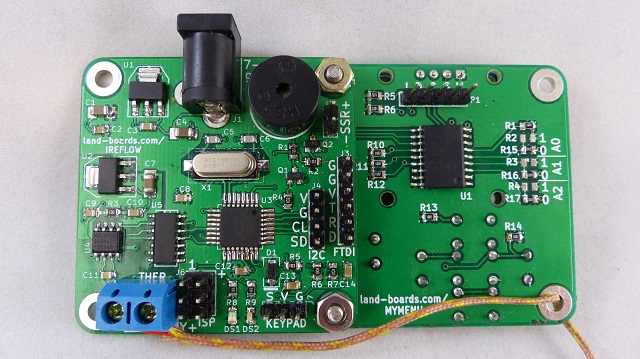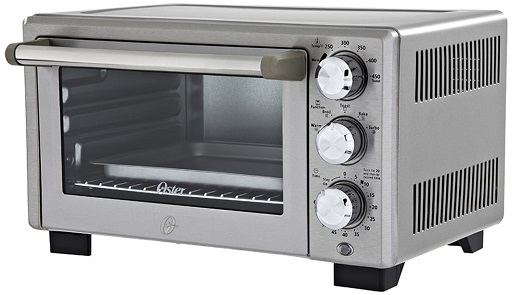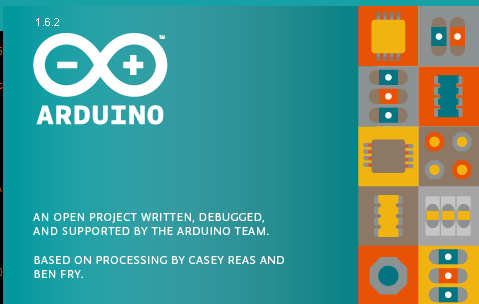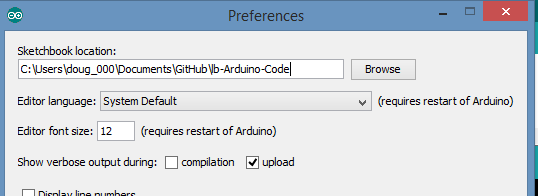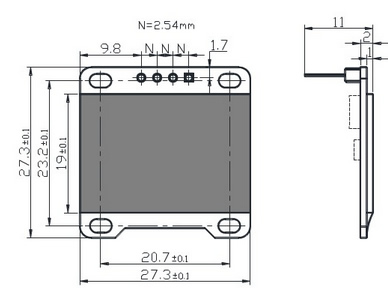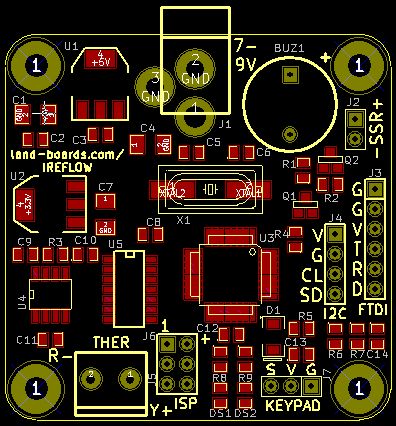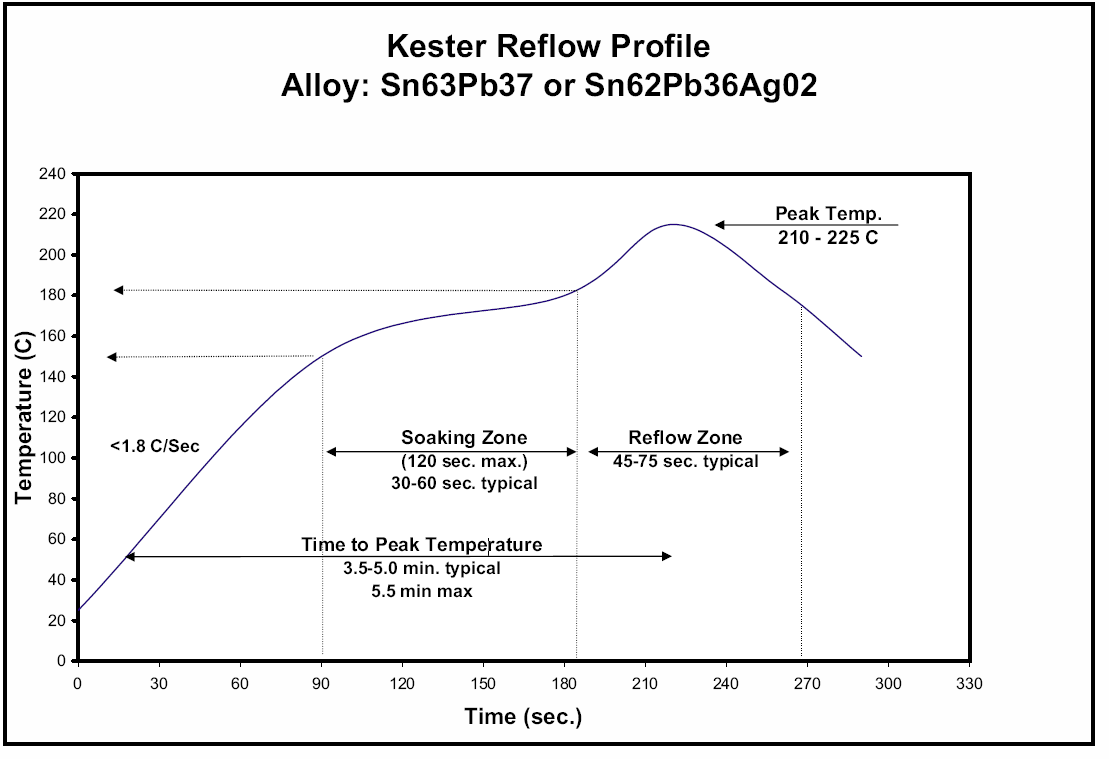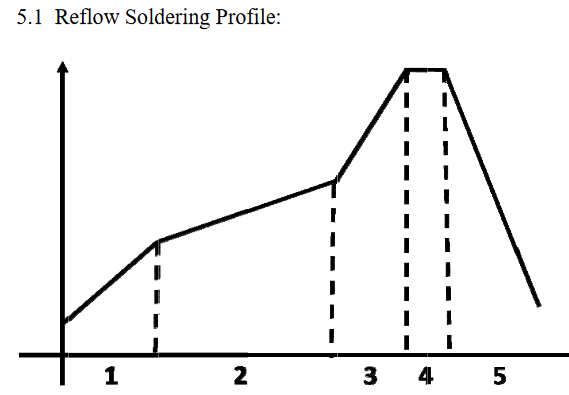IReflow
Jump to navigation
Jump to search
Contents
Reflow Oven Controller
Image shows top of iReflow and rear of MyMenu card
Features
- IR Oven controller
- Lead free profile
- Lead profile
- Type K thermocouple
- Connection via screw terminal block
- ATMega328 Microprocessor
- Arduino compatible
- 16 MHz
- FTDI connector for serial USB
- ISP connector
- Buzzer to indicate done
- I2C
- MyMenu - OLED plus buttons
- 2 LEDs
- Supports external SSR
- 49x49mm form factor
- 4-40 mounting holes spaced 41mm apart
Parts
- Solid State Relay SSR-25DA 25A /250V 3-32VDC for PID Temperature Controller TE
- Welding Blanket - To over the insides
Toaster
- Oster 6-Slice Toaster Oven, Silver tssttvdfl2
- 1440 Watts, 12 Amps
Reflow toaster oven conclusions:
- This more expensive oven with 4 elements has more than enough power to meet the most demanding temperature slopes and ranges for reflow soldering of both lead-free and leaded solders.
- The oven has too much power due to the 4 elements to be run on manual without heating too quickly. The soak zone in the cycle requires a dwell for about 2x-4x the time that the oven would produce under manual control.
- The oven high temp thermostat has quite a bit of hysteresis but the high temperature is above the temperatures for both profiles. Set the oven to highest temp and control it.
- Probably doesn't need PID control although it would be cooler if it was.
- Definitely need PTouch labels on the door for contaminants "Don't cook food in here" and for heat "Gets hot to touch".
Connectors
J1 - 9V DC Power Jack
- Center = +9VDC (nominal)
- Shield = GND
J2 - Solid State Relay
- Driven by transistor to ground
- +5V
- SSR-Output
J3 - FTDI
- GND
- GND
- +5V
- TxD
- RxD
- Reset
J4 - I2C OLED
- +5V
- GND
- SCL
- SDA
J5 - Thermocouple
- Thermo + = Yellow
- Thermo - = Red
J6 - ISP Download cable
- MISO
- +5V (+ marked on PWB)
- SCK
- MOSI
- RESET
- GND
J7 - Keypad
- N/A with MyMenu card
- GND
- VCC
- SW5WAY - Analog
Programming
Card Driver
Fixing the Device Signature Error in the Arduino IDE
- The SMT ATMega328P-AU part has a different signature than the UNO.
- When you try to program the IReflow card using Arduino Uno as the board type you get an error
avrdude: Expected signature for ATmega328P is 1E 95 0F
Double check chip, or use -F to override this check.
Wrong microcontroller found. Did you select the right board from the Tools > Board menu?
- The Arduino IDE needs avrdude.conf changed to program the AU part
- In earlier versions of the Arduino IDE finding the avrdude.conf file was relatively straightforward
- From Programming the Atmega328 - AU in Arduino
- Correct Signature = 0x1e 0x95 0x14;
- Keep old copy too.
- In Arduino IDE 1.6.2 the avrdude.conf file is in a different location
- Changing it here doesn't work since it's located in a roaming directory at least for Windows 8.1
- C:\Program Files (x86)\Arduino\dist\default_package.zip\packages\arduino\tools\avrdude\6.0.1-arduino2\etc
- Other OS versions may be different
- Locate the avrdude.conf file
- On my computer it is at: C:\Users\doug_000\AppData\Roaming\Arduino15\packages\arduino\tools\avrdude\6.0.1-arduino2\etc
- Find it by turning on verbose download in the IDE
- The path will be shown in the output
Edit avrdude.conf
- Find the string
part parent "m328"
- It should look like
- Change to
u8g OLED library
- Library notes
- Display characters/variables:
- Use u8g.print (xx) function, just like the way you did with Serial.print (xx).
- Change the font:
- Use u8g.setFont (xx) function to change the font, parentheses "xx" can be replaced by the corresponding font library name (you can search font library in u8g.h within U8glib \utility folder);
- Large font is recommended for u8g_font_7x13, middle font for u8g_font_fixed_v0r and small font for u8g_font_chikitar;
- Change coordinates:
- Use u8g.setPrintPos (x, y) function to change the display of coordinates
- Display characters/variables:
- fonts
- HelloWorld
- Uncomment
U8GLIB_SH1106_128X64 u8g(U8G_I2C_OPT_NO_ACK); // Display which does not send ACK
MAX31855 Thermocouple Amplifier
- Adafruit Thermocouple Amplifier MAX31855 breakout board (MAX6675 upgrade) - v2.0
- Adafruit Thermocouple tutorial
- MAX31855 Arduino library code
Other
- LiPo Battery Care
Algorithm
Piece-wise Linear
#define TIME0_LEADFREE 0
#define TIMET1_LEADFREE 120
#define TIMET2_LEADFREE 165
#define TIMET3_LEADFREE 210
#define TIMET4_LEADFREE 218
#define TIMET5_LEADFREE 600
#define TEMPT0_LEADFREE 22.0
#define TEMPT1_LEADFREE 150.0
#define TEMPT2_LEADFREE 200.0
#define TEMPT3_LEADFREE 252.0
#define TEMPT4_LEADFREE 252.0
#define TEMPT5_LEADFREE -40.0
double getDesiredTempLeadFree(int currTime)
{
if (currTime < TIMET1_LEADFREE)
return (TEMPT0_LEADFREE + ((double)currTime * ((TEMPT1_LEADFREE-TEMPT0_LEADFREE)/(float)(TIMET1_LEADFREE-TIME0_LEADFREE))));
else if (currTime < TIMET2_LEADFREE)
return (TEMPT1_LEADFREE + ((double)(currTime-TIMET1_LEADFREE) * ((TEMPT2_LEADFREE-TEMPT1_LEADFREE)/(float)(TIMET2_LEADFREE-TIMET1_LEADFREE))));
else if (currTime < TIMET3_LEADFREE)
return (TEMPT2_LEADFREE + ((double)(currTime-TIMET2_LEADFREE) * ((TEMPT3_LEADFREE-TEMPT2_LEADFREE)/(float)(TIMET3_LEADFREE-TIMET2_LEADFREE))));
else if (currTime < TIMET4_LEADFREE)
return (TEMPT3_LEADFREE);
return (TEMPT5_LEADFREE); // off
}
Mechanicals
OLED
Layout
Calibration
Lead Solder Profile
Lead-free Solder Profile
On Bake Setting - Manual Control - Heat/Cool
- Temp set to 450 deg F
- Ran oven until thermostat kicked in then shut off
Observations - Leaded Profile vs Manual Oven
Feature Lead Solder Oven (Bake-Manual) Notes Ramp Up < 1.8 deg C/sec 2.2 deg C/sec max (1) Soak Temps 150-180 deg C Soak Time (L) 30-60 secs ~15 secs (2) Ramp to Peak ~1 deg C/sec 1 deg C/sec Peak soak 210-224 deg C Ramp-down Rate
- Peak is a bit too fast but average is right on
- Soak time needs to be extended 2x-4x the time
Observations - Lead-Free Profile vs Manual Oven
Feature Lead-Free Oven (Bake-Manual) Notes Ramp Up 1-4 deg C/sec 2.2 deg C/sec max (1) Soak Temps 150-200 deg C Soak Time (LF) 60-180 secs < 30 secs (2) Ramp to Peak 1-4 deg C/sec 1.5 deg C/sec Peak soak 245-260 deg C 290 max (3) Ramp-down Rate 1-6 deg C/sec max 1 deg C/sec
- Soak time needs to be extended 2x-4x the time
- Max temp should be controlled and oven left at highest temp due to hysteresis of the thermostat (pretty wide range)
Table - Bake Setting
Time (secs) Temp (deg C) Slope (degC/sec) 0 25.75 30 44 0.61 60 87 1.43 90 153 2.20 120 206 1.77 150 245 1.30 180 272 0.90 210 290 0.60 240 276 -0.47 270 264 -0.40 300 234 -1.00 330 213 -0.70 360 196 -0.57 390 183 -0.43 420 171 -0.40 450 162 -0.30 480 154 -0.27 510 147 -0.23 540 141 -0.20 570 134 -0.23 600 128 -0.20 630 123 -0.17 660 119 -0.13
